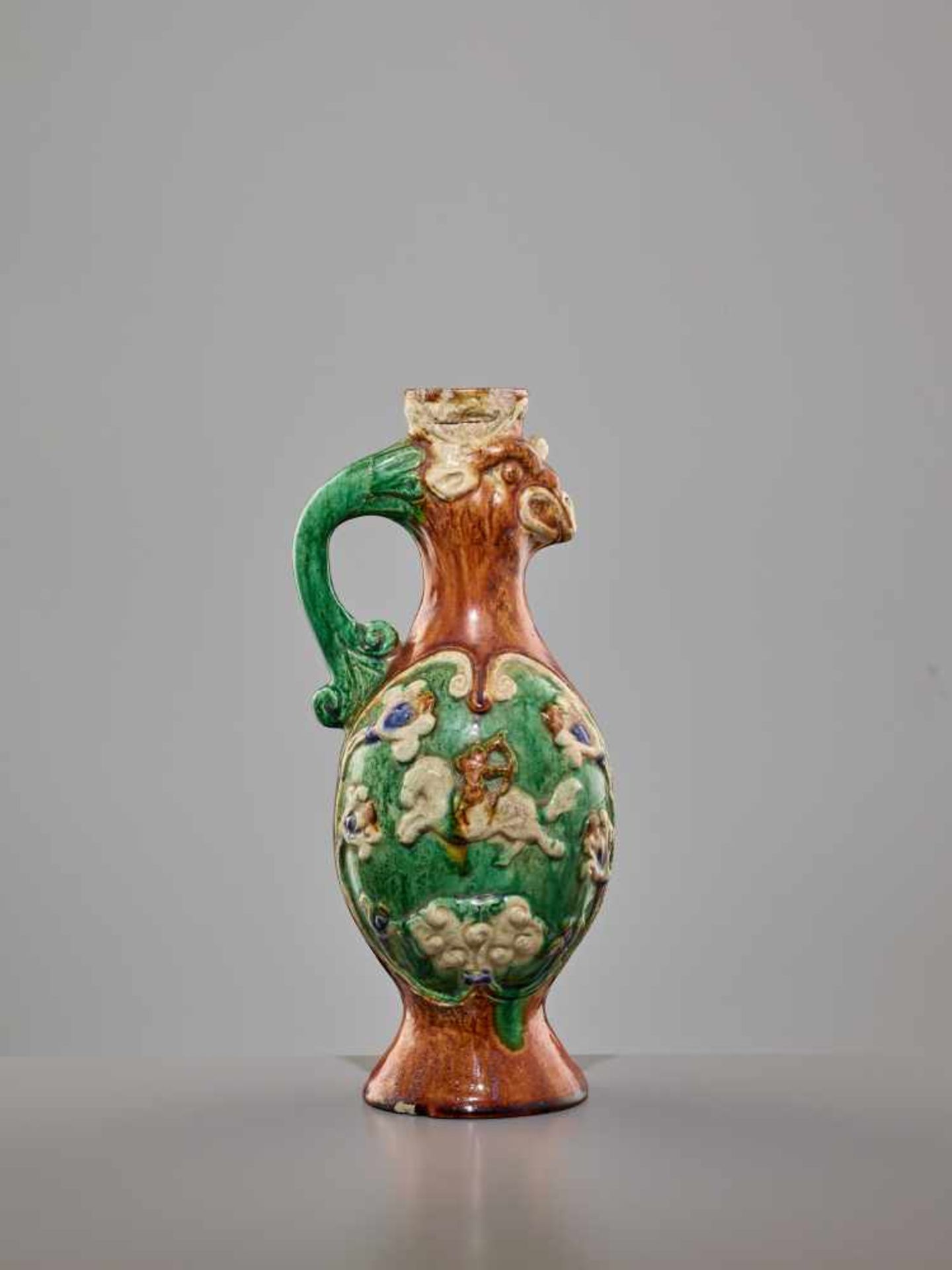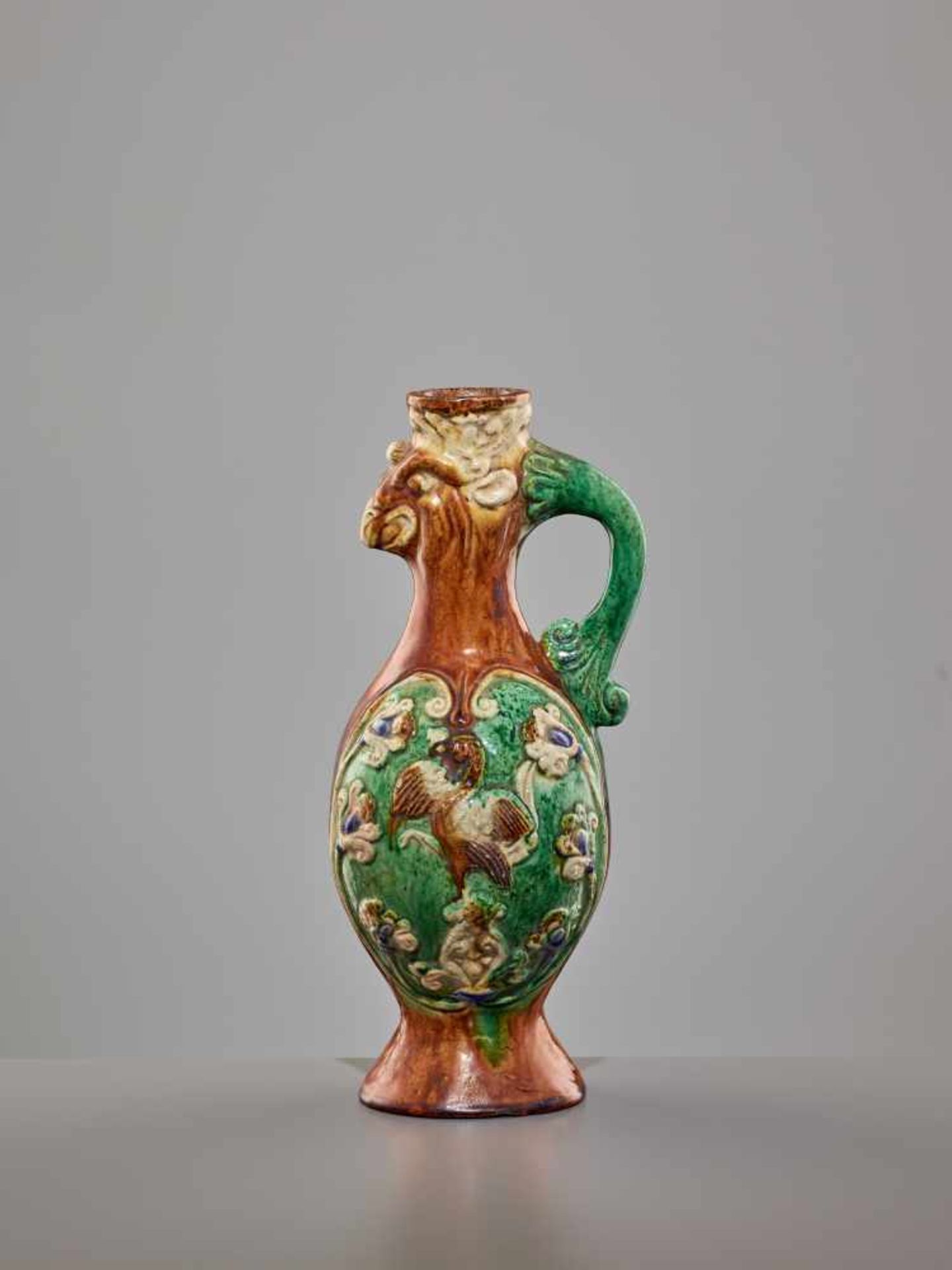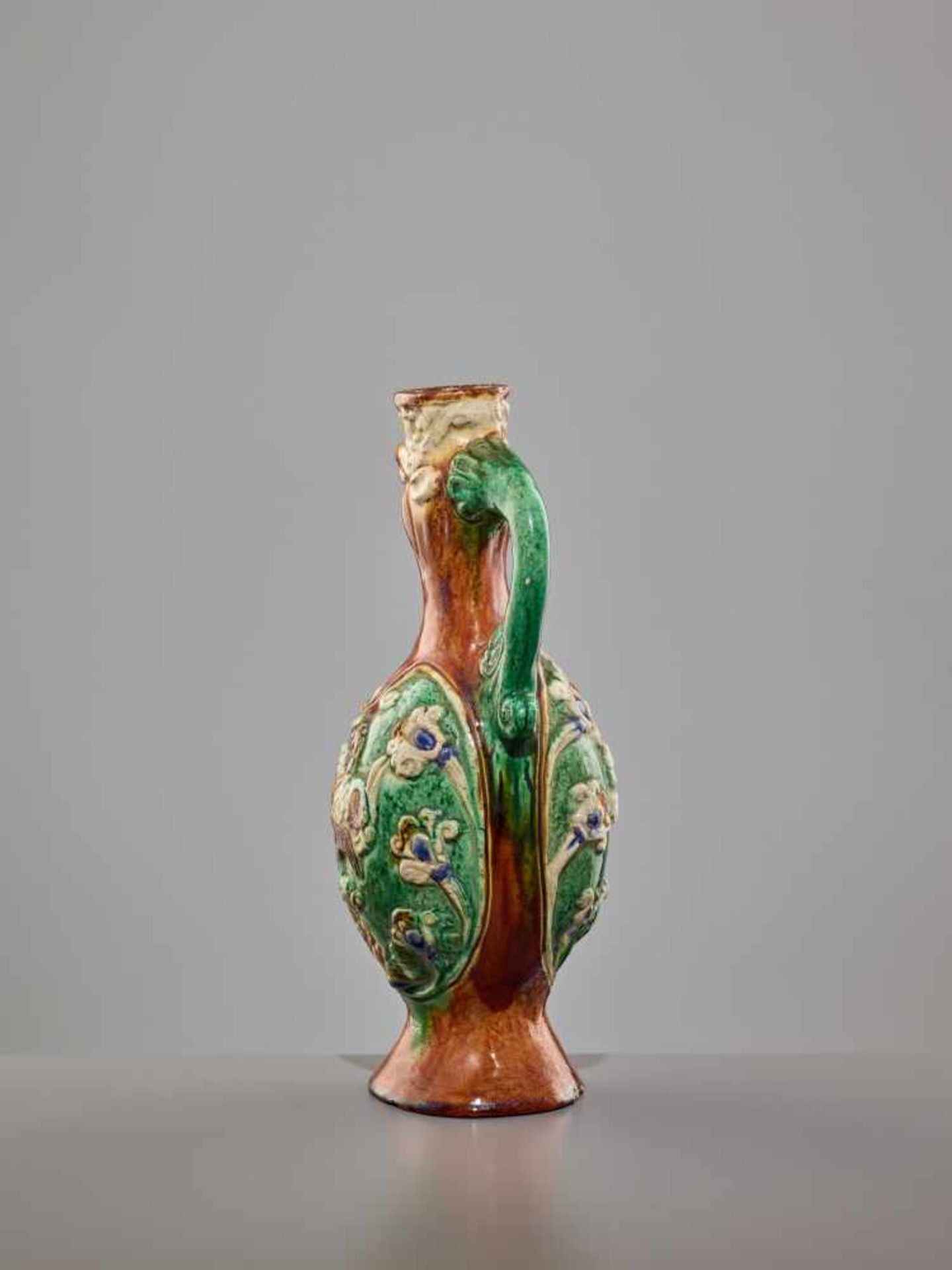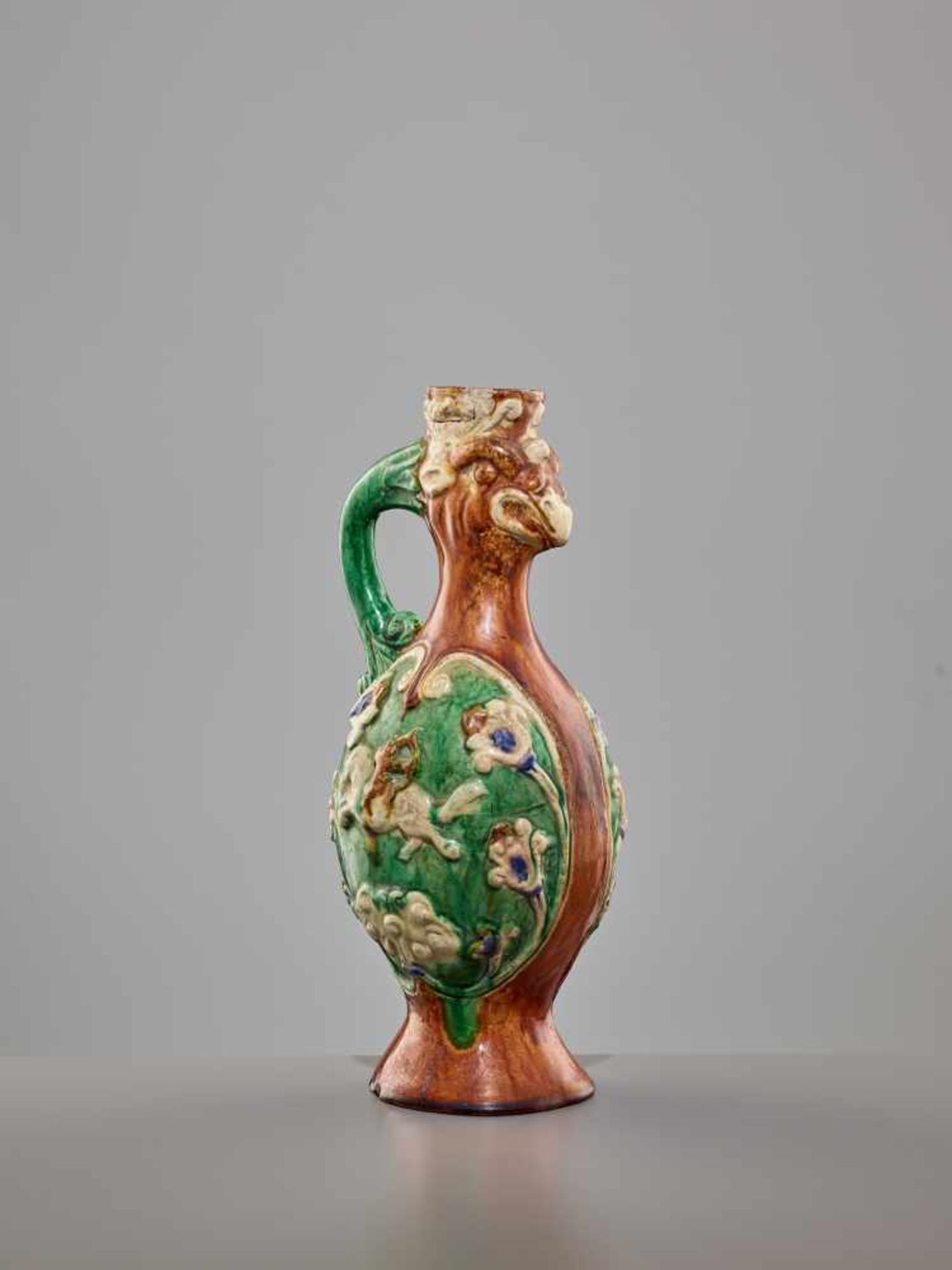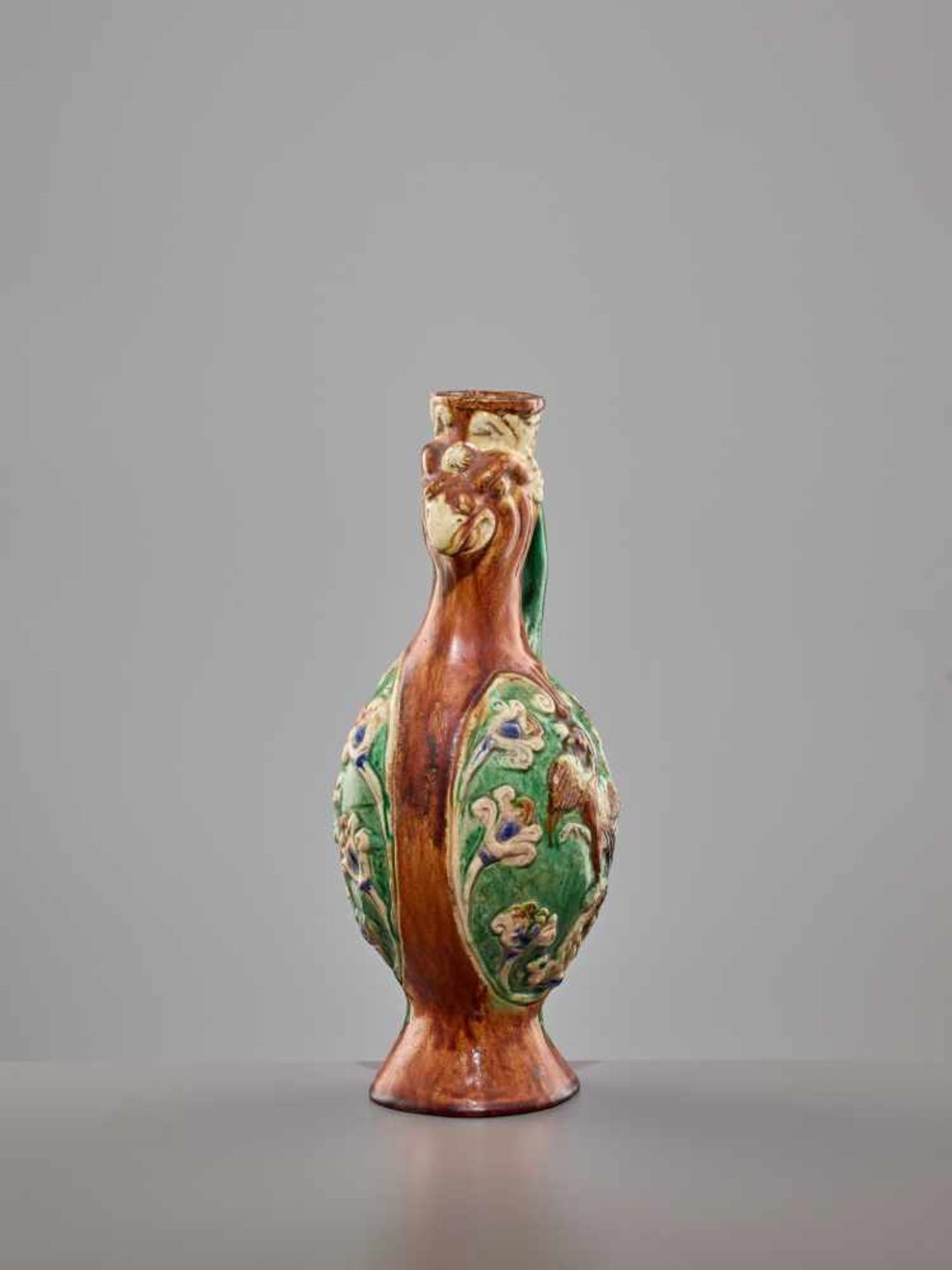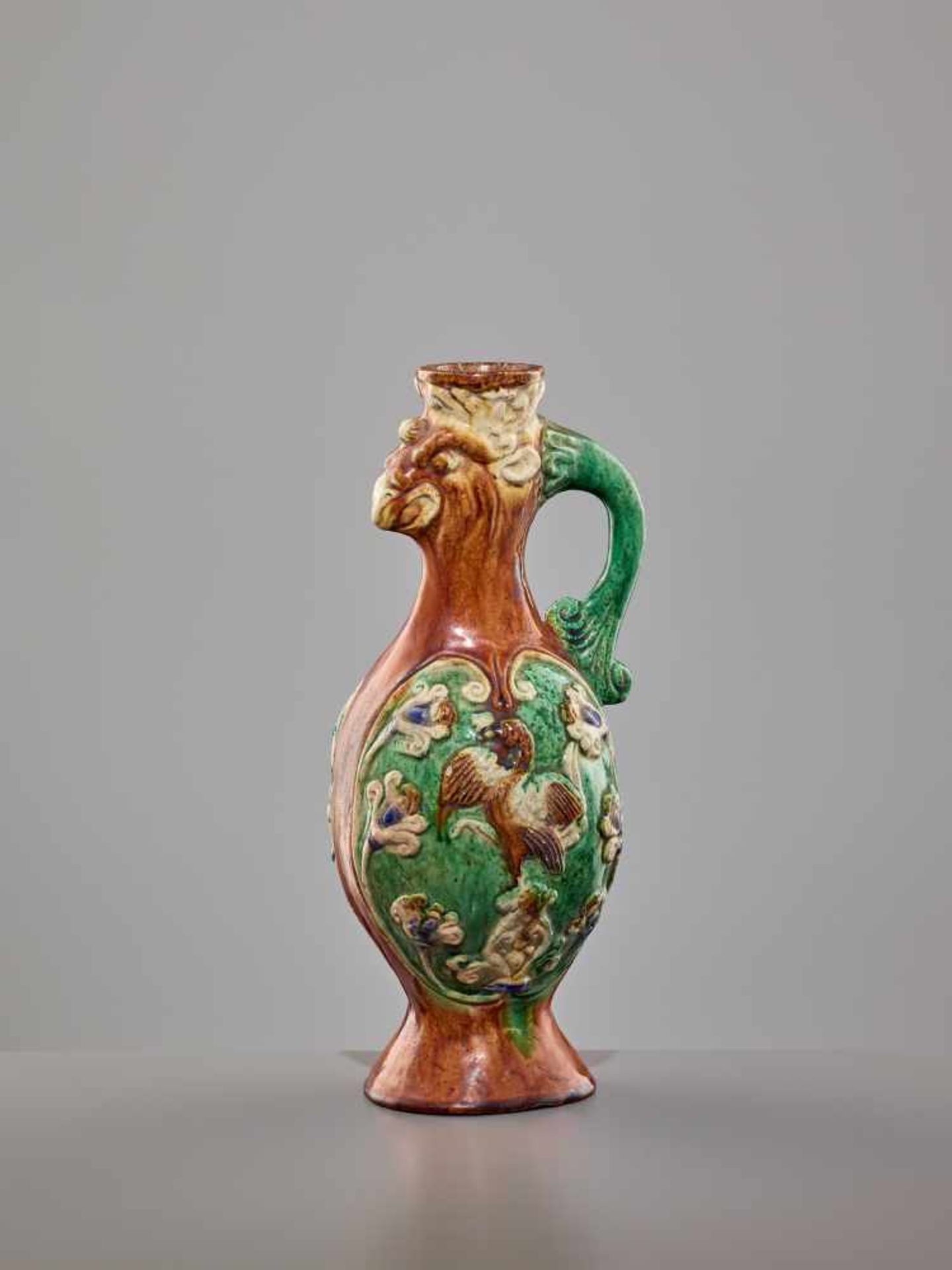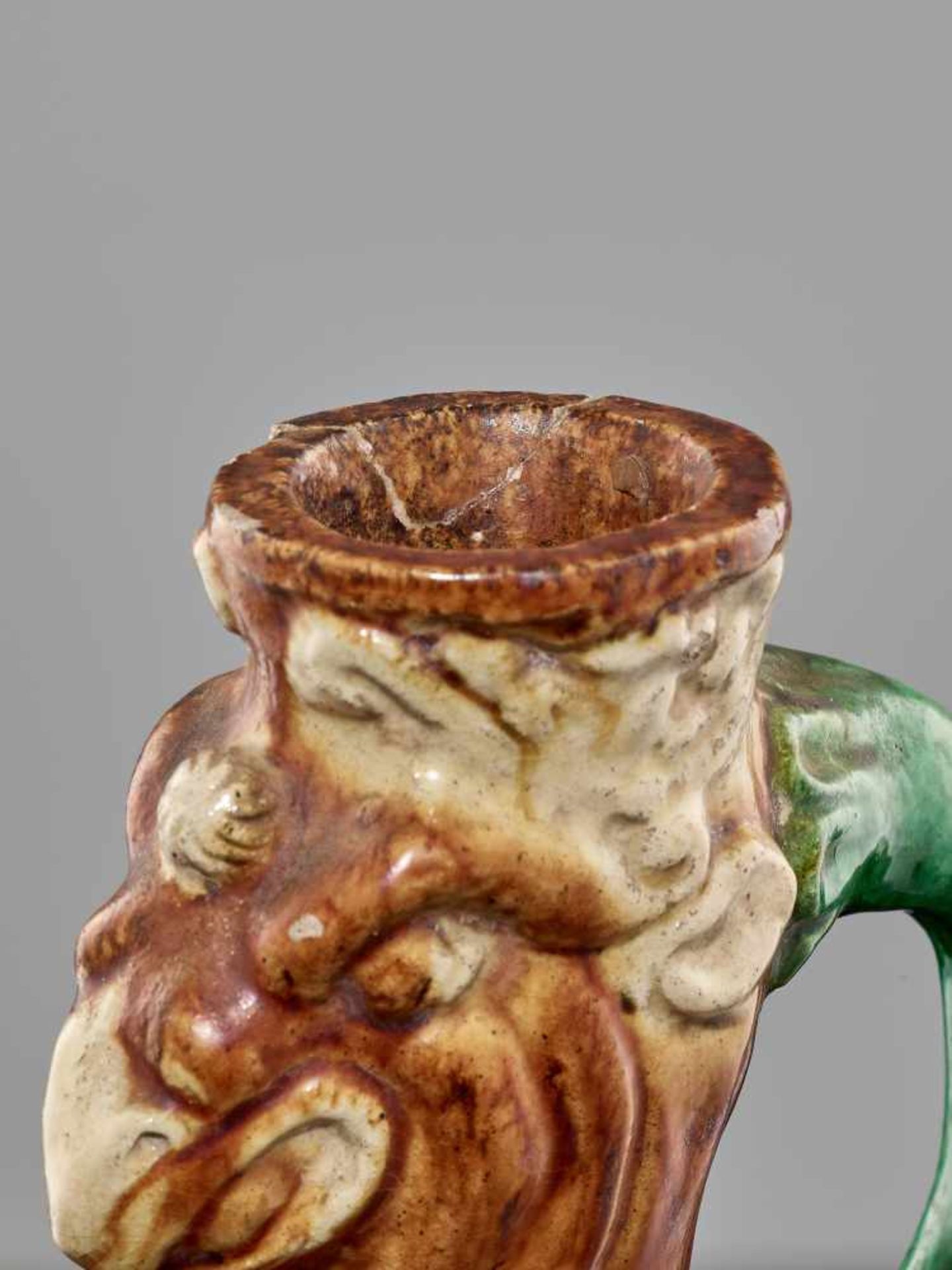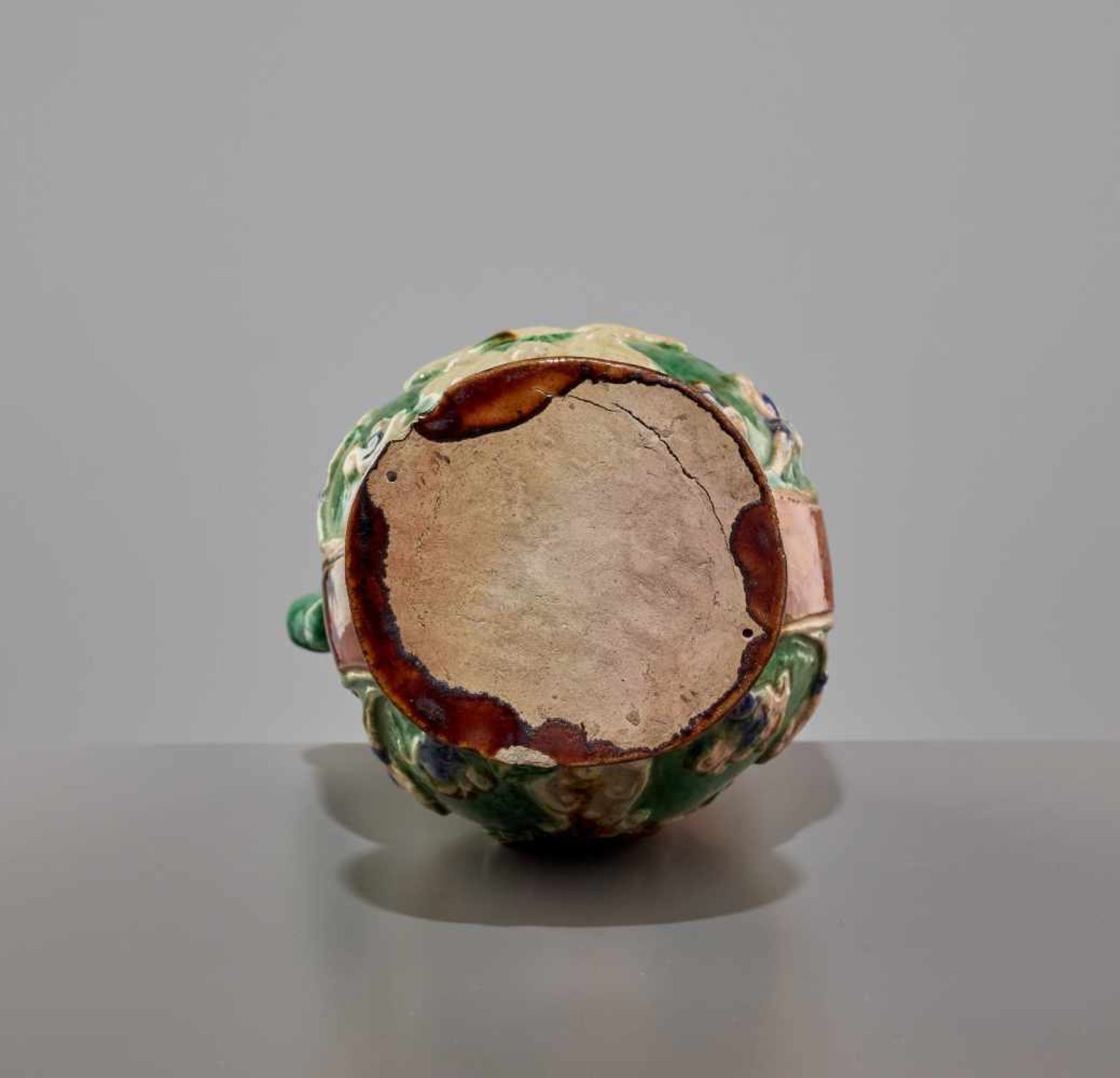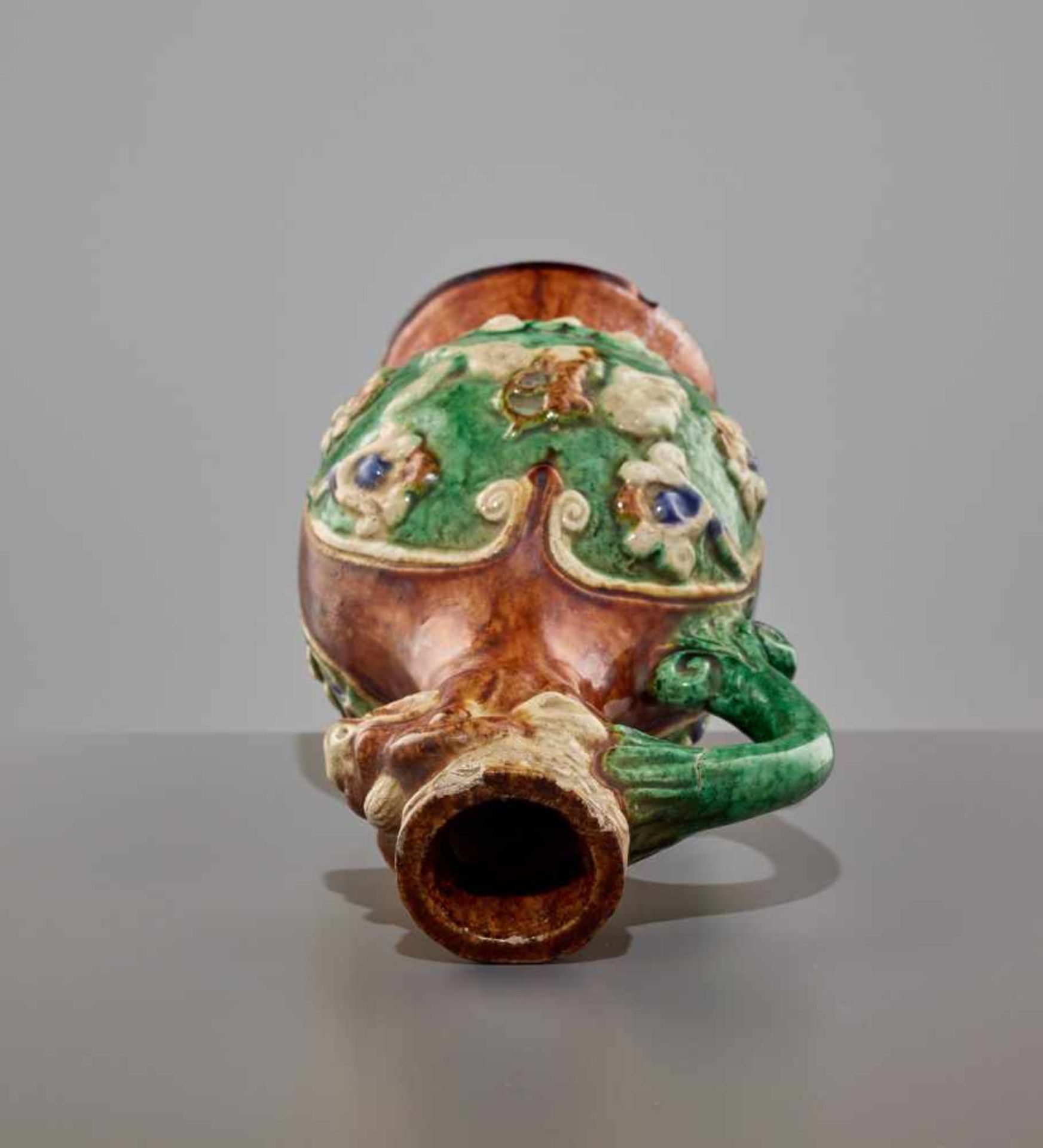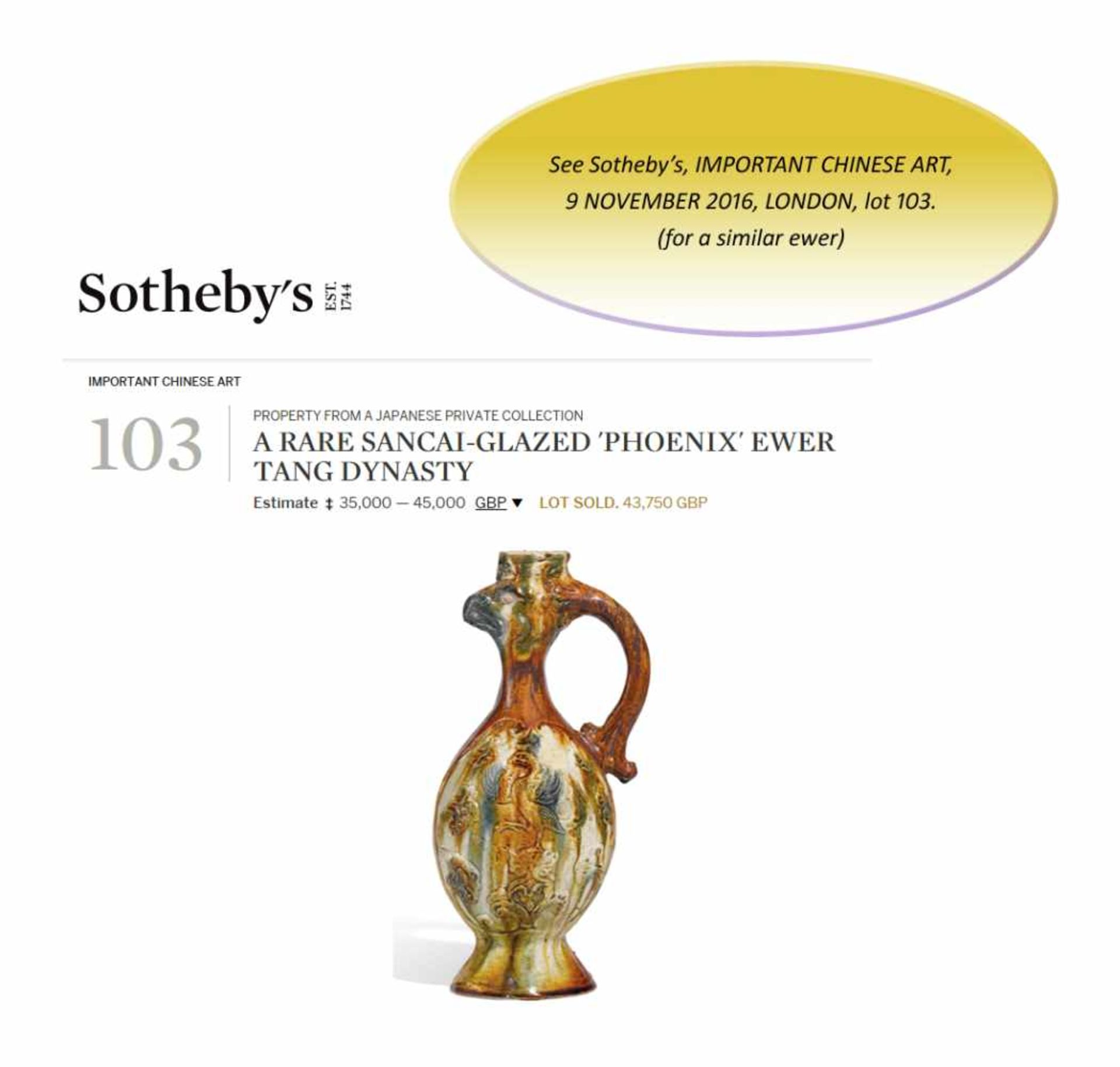36
A RARE SANCAI-GLAZED 'PHOENIX' EWER, SONG DYNASTY The finely potted body of elegant ovoid form,
Fine Chinese Art, Japanese and Buddhist Art
Sale Date(s)
Venue Address
For Galerie Zacke delivery information please telephone +43 1 5320452.
Important Information
26.40 % buyer's premium including VAT
3 % live surcharge plus VAT
Terms & Conditions
§ 1) The auction shall be carried out in accordance with the provisions of the rules of procedure of GALLERY ZACKE, KOHLMARKT 7, 1010 VIENNA (hereinafter referred to as the company) as well as in accordance with sections 244-246 of the Gewerbeordnung [Industrial Code] 1994. The auction shall be carried out on commission. The auctioneer shall be entitled to withdraw lots exceptionally, to conduct out the auction deviating from the order of the catalogue numbers and to offer lots jointly. In the event of any dispute concerning a double bid or if the auctioneer has missed a bid, the auctioneer shall be entitled to revoke acceptance of a bid and to continue auctioning off the item. The figures attached to the text shall be the expected last and highest bid in EURO (€) from the respective expert. As a rule, the bid shall be increased by 10% of the last bid. (See list of the bidding increments).
§ 2) The acceptance of a bid shall be granted to the highest bidder unless a seller’s reserve price has been agreed with the consignor. Such a seller’s reservation (also referred to as limit) shall be the minimum price limit below which particular lots shall not be sold during the auction. This limit shall be disclosed upon request and may not exceed the lower estimated price. If a limit (seller’s reserve price) is not achieved, the bid of the highest bidder shall be accepted subject to reservations only. In this case, the highest bidder shall be bound to its highest bid for a period of 8 (eight) working days. If the highest bid from the highest bidder is not finally accepted within this period of time, its binding commitment to this bid shall expire. In order for the final acceptance of the bid to become effective, it is sufficient to send a corresponding notification to the address named by the highest bidder within the stated period of 8 working days.
§ 3) All items shall be subject to differential taxation. A uniform surcharge of 22% plus the value added tax applicable to the surcharge to the amount of 20% shall be added to the achieved highest bid (final and highest bid). Thus the surcharge shall be 26.4% of the final and highest bid in total.
§ 4) In the event of sales abroad, the value added tax will be repaid if the item is sold to a country which is not a member country of the European Union (third country), the legal requirements are met and the proof of exportation is provided. The value added tax shall not be shown separately on the invoice.
§ 5) The auction buyer must pay the purchase price immediately upon acceptance of the bid (final and highest bid plus 22% surcharge, plus the value added tax applicable to the surcharge to the amount of 20%). However, the company may grant the auction buyer a respite for the payment of the purchase price in whole or in part in individual cases. If a respite is refused, the acceptance of the bid may be revoked and the item may be reoffered . In the event of revocation of the acceptance of the bid, the company shall be entitled to accept the last bid from the underbidder.
§ 6) In the event of respite in whole or in part, the company shall be entitled to charge default interest (12% p.a.) as well as storage charges (2.4% of the final and highest bid per month commenced) after 14 days upon acceptance of the bid. The item purchased at auction shall be handed over exclusively upon full payment of the purchase price including all costs and charges accrued since the acceptance of the bid.
§ 7) The buyer can take acquired items in possession, as far as possible, immediately or after the end of the auction. Items which have been fully paid for shall be handed over in our show rooms in GALLERY ZACKE, KOHLMARKT 7, 1010 VIENNA. If a deferred purchase price is not paid within the set period, the company shall be entitled to auction the item again in order to recoup its claim from the defaulting auction buyer. In this case, the defaulting auction buyer shall be liable to the company for the total loss of commission incurred by the company due to the re-auction as well as for any default interest and storage charges.
§ 8) The company shall be entitled to a lien on all items of the buyer irrespective of whether the buyer bought them within the scope of an auction or in free sale or the company secured ownership of these items otherwise. This lien shall serve to secure all current and future, qualified, limited and unmatured claims to which the company is entitled and which result from all legal transactions concluded with the buyer.
§ 9) The items received for auction will be exhibited and may be viewed prior to the auction. In doing so, the company shall give everyone the opportunity to check the nature and the condition of the exhibited items to the extent deemed possible within the scope of the exhibition. Every bidder shall be deemed to act on its own behalf unless it provides a written confirmation saying that it acts as a representative of a well-known principal. The company may refuse bids; this shall particularly apply if a bidder who is unknown to the company or with whom the company has no business connections yet does not provide security by the beginning of the auction at the latest. However, in principle there shall be no claim to accept a bid. If a bid has been refused, the previous bid shall remain effective.
§ 10) The company’s experts evaluate and describe the items received for auction and determine the starting prices unless otherwise stated in the catalogue or expert opinion. The information concerning production technique or material, state of preservation, origin, design and age of an item is based on published or otherwise generally accessible (scientific) findings concluded by the company’s experts with the necessary care and accuracy. The company shall warrant to the buyer according to §22 of the AGB (General Terms and Conditions) that properties are correct provided that any possible complaints referring to this are made within four weeks upon their taking into possession. Subsequent complaints shall be excluded in principle. The company shall not be liable for any further information in the catalogue and expert opinion as well. This shall also apply to illustrations in the catalogue. The purpose of these illustrations is to guide the potential buyer during the preview. They shall not be authoritative for the condition or the characteristics of the pictured item. The catalogue and the expert opinions shall only mention defects and damage affecting the artistic or commercial value significantly. Complaints concerning the price shall be excluded upon acceptance of the bid. The company reserves the right to amend catalogue information prior to the auction. These amendments shall be made either by a written notice at the place of auction or orally by the auctioneer immediately prior to offering of the respective item. In this case, the company shall be liable for the amendment only. All items offered may be checked prior to the auction. These items are used. Any claims for damages exceeding the liability named above and resulting from other material defects or other defects of the item shall be excluded. When making the bid, the bidder confirms that it has seen the item prior to the auction and has made sure that the item corresponds to the description.
§ 11) ) If a customer is not able to participate in an auction personally, the company shall accept purchase orders. These orders may be placed in writing, via email or fax. In the case of a purchase order placed by phone or orally, the company shall reserve the right to make the performance dependent on a confirmation from the principal communicated in writing, via email or fax. Furthermore, the company shall not be liable for the performance of purchase orders. Purchase orders with equal top bid limits will be considered in the order of their receipt. Bids which are only one increment above the starting price shall be exhausted totally. Bids which do not correspond to the increments determined by the company (see bidding increments) in tabular form will be rounded up to the next higher increment. The table of these increments can be sent upon request. In the case of lots auctioned“without any limits“, bids below the estimated price shall be exhausted totally. The written bid (purchase order) must include the item stating the catalogue number and the offered top bid limit which is quoted as the amount of the acceptance of the bid without buyer’s commission and without value added tax. Ambiguities shall be carried by the bidder. A purchase order which has already been placed may only be cancelled if the written withdrawal is received by the company at least 72 hours prior to the beginning of the auction.
§ 12) The company may refuse to process a purchase order without explanation until offering or make this dependent on payment of a deposit. In the event of an unsuccessful order, such a deposit will be reimbursed by the company within 5 working days. Processing of purchase orders is free of charge.
§ 13) Every contributor shall in principle be entitled to withdraw the items offered for auction until the start of the auction. Therefore, it is impossible to assume liability or to give warranty for the actual offering.
§ 14) Items paid must be collected within 30 days of payment. Items which have not been collected may be delivered without further communication at a starting price from the recent auction reduced by 50% after 30 days from the respective auction date. Items which have not been collected within 3 (three) working days after the auction or for which the company does not receive any proper shipping instructions stating the type of shipping and the address of dispatch (independent of a possibly placed purchase order) within 3 (three) working days after the auction shall be stored at the owner’s risk. Furthermore, the company shall be entitled to store items which have been purchased at auction and paid but not collected at the buyer’s risk and expense, including the costs for an insurance, with a forwarding agency. It shall be understood that the provisions concerning the re-auctioning of unpaid and paid but not collected items must also apply to items not exhibited or stored on the premises of the company. The ownership shall be transferred the buyer at the time of handing over the delivery note.
§ 15) In the case of mixed lots with a starting price of less than EUR 350.00, the company shall not warrant for the completeness or correctness of the individual items within a mixed lot.
§ 16) A registration for a bid by telephone for one or several items shall automatically represent a bid at the starting price for these items. If the company cannot reach the bidder by telephone, it will bid on behalf of the bidder by phone up to the starting price when the respective auction lot is called.
§ 17) Payments made to the company by mistake (through the payer’s fault) (e.g. due to miscalculation of the exchange rate by the payer) or payments made to the company for the same invoice several times shall be compensated in form of a credit note for goods for an indefinite period of time. The repayment of such payments in cash shall be excluded.
§ 18) In the case of individual auction lots, it may happen that they are delivered several times. In such a case, the auctioneer may accept a second or third etc. bid from the underbidder(s). In this case, the text in the catalogue and not the illustration in the catalogue shall also be exclusively binding with regard to the warranty (relating to these auction lots).
§ 19) When making a bid, whether personally, in writing or by telephone, the bidder shall acknowledge these terms of auction, the AGB (General Terms and Conditions) as well as the rules of procedure and the schedule of fees (as amended) of the company.
§ 20) The place of performance of the contract brought about between the company on the one hand and the seller as well as the buyer on the other hand shall be the place of business of the company. The legal relationships and contracts existing between the company, the sellers and the buyers shall be subject to the Austrian substantive law. The company, the sellers and the buyers shall agree to settle all disputes resulting from, concerning and in connection with this contract before the territorially competent court for the first district of Vienna.
§ 21) The export of art objects from Austria, when indicated, shall require a permit from the Bundesdenkmalamt [Federal Monuments Office]. In any event, the company shall orally provide information about art objects for which an export permit will probably not be granted at the beginning of the auction.
§ 22) Zacke reserves the right to assign to the customer all rights and obligations resulting from the contractual relationship between Zacke and the contributor by a way of a respective declaration, as well to assign to the contributor all rights and obligations resulting from the contractual relationship between Zacke and the customer by way of a respective declaration, in each case in terms of a complete assignment of contract with the result that the contractual relationship – following the submission of the aforementioned declarations by Zacke – shall exclusively be between the contributor and the customer, which is in accordance with the basic model of the commission agreement. Customers and contributors shall already now give their explicit consent to this contract assignment.






















